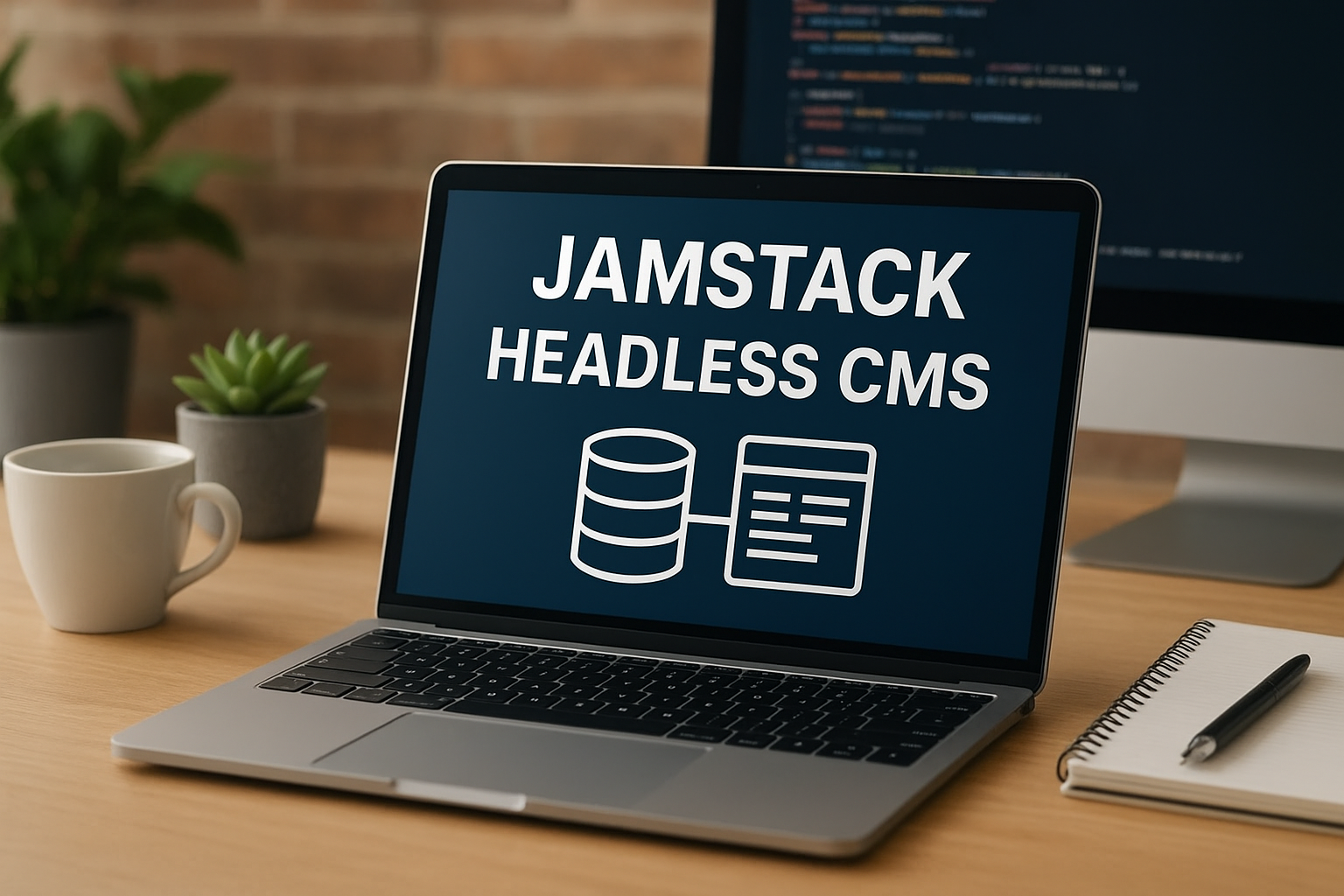Jamstack and Headless CMS

As developers we’re searching for ways to make websites faster, more secure and easier to manage. At the same time we want workflows that don’t slow us down or frustrate our content teams. On that time where Jamstack comes in. Pair it with a headless CMS and suddenly we’ve got modern web development setup that feels lighter, cleaner and flexible than a traditional all in one approach.
What is Jamstack really?
Jamstack stands for JS, API and Markup. Instead of relying on heavy server based systems to generate pages on the fly, Jamstack pre renders content and serves it through APIs. This reduces dependencies, speeds up delivery and makes scaling much easier.
For developers, it’s like trading in an old toolbox full of mismatched tools for a sleek, well organized kit. You spend less time wrestling with backend code and more time building great user experiences. And for users the result is a site that loads quickly, responds smoothly and holds up even under heavy traffic.
Role of Headless CMS
Content is at the heart of any website. Traditional CMS platforms like wordpress and Drupal combine content management with presentation. It works but it often feels restrictive especially if we want our content to appear across websites, apps and other devices.
A headless CMS separates the backend from the frontend. It delivers content via API letting push it anywhere a website, a mobile app or even a smartwatch. This flexibility makes it the perfect partner for Jamstack, which is already API driven at its core.
Why developers and users love the combo
The biggest win is performance. Jamstack sites are pre-rendered and served through CDNs which means the content is already waiting for users, no matter they are in the world. There’s no waiting for a server to build a page in realtime. The result is sub second load times a clear advantage for both user experience and SEO.
The other thing is security. Traditional CMS platforms often expose vulnerabilities because of plugins, database connections and outdated themes. Jamstack reduces the attack surface by serving static files and securing sensitive operations through APIs. Combine this with a managed headless CMS and maintenance becomes lighter while risks are lower.
A workflow that actually feels good
From a developer’s perspective Jamstack and headless CMS just feel better to work with. You can use modern frameworks like Next.js, Nuxt or Astro plug into Git-based workflows and automate deployments with platforms like Netlify or vercel. Meanwhile content teams don’t need to touch our codebase. They can update text, images or product details in the headless CMS without worrying about breaking layouts. This separation makes collaboration smoother and keeps everyone in their lane developers build writers write.
Not All sunshine and rainbows
Jamstack isn’t magic bullet. Developers new to this architecture may face a learning curve. Adding features like authentication, real-time chat or complex e-commerce sometimes requires third-party services and extra integrations.
But here’s good news the eco system is growing rapidly. Tools, plugins and documentation are getting better every month making these hurdles easier to overcome. Once you get used to the flow the benefits far outweigh the challenges.
The bigger picture
The web isn’t standing still. Businesses today need content across websites, apps, dashboards and even wearable devices. A decoupled model like jamstack with headless CMS makes that possible without adding unnecessary complexity. Whether it’s a small site or a large platform this architecture scales gracefully and delivers consistent results.
If you’re about building websites that are fast, secure and ready for the future it’s hard to ignore jamstack and headless CMS. They bring together the four essentials of modern web development: Speed, security and flexibility.
There’s a bit of a learning curve but once you dive in you’ll see why so many developers are making the switch. This isn’t just another passing trend it’s quickly becoming the standard for building digital experiences that actually deliver.
References
DEV.to – Headless CMS: A Comprehensive Guide
Jamstack.org – What is Jamstack?
